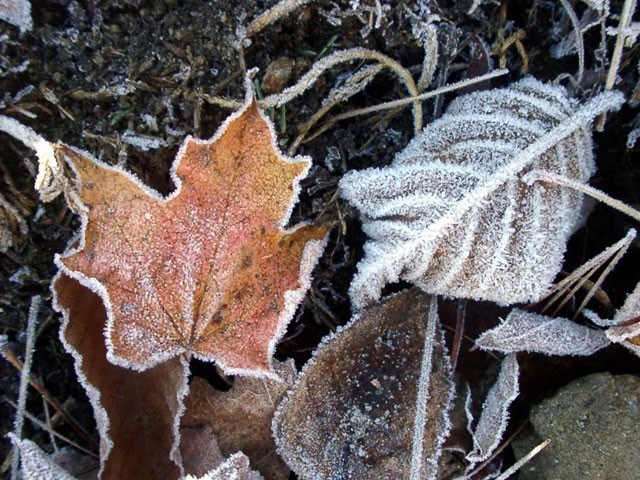Whistler Naturalists
Maybe you haven’t really thought about it, but it is really quite an amazing phenomenon that our native plants will survive exposure to temperatures below freezing. Right now they’re going through nighttime freeze and daytime thaw cycles which may last for several days or even weeks. They’re just standing there in the cold; they can’t migrate, hibernate or put on a puffy jacket. How do they do it?
For trees and shrubs, the shortening days of summer and fall (photoperiodism) are the environmental clues that tell the plant that winter is approaching and set off a chemical trigger. The plant stops growing and begins to make changes that will allow it to withstand winter cold. The plant cells accumulate sugars and salts that act as antifreezes and the fats in the cell membranes change to polyunsaturated fats that stay liquid at lower temperatures. This makes the cell membrane less likely to crack during freezing and thawing.
When frosty comes to town (i.e. when plants are cooled below freezing) ice usually forms, first between cells, in the water with the lowest solute content. (Just like salt —a solute — in cooking water raises the boiling temperature, solutes also lower the freezing temperature; they get in the way of the water molecules, making it harder for them to become re-arranged into ice crystals .) Ice crystals grow as the temperature falls further and attracts water from solutions with more solutes (i.e. from inside the cells) to airspaces between the cells. Cells then shrink due to dehydration and the further the temperature falls, the greater the accumulations of ice between cells.
It is ice formation and dehydration, not low temperatures per se, that causes freezing injury to plant cells. Damage occurs when ice crystals grow and puncture into the cell (cytoplasm) or severe dehydration occurs.
Plants that can survive the lowest temperatures typically have
larger airspaces (a place for the ice to form). The cell walls in these plants
also can collapse like an accordion and the cell content (protoplasm) is able
to dehydrate without damage. The cells of those plants which have thick cell
walls can not collapse, and are consequently damaged by the formation of ice.
Many woody plants can also avoid freezing injury, because they allow deep
supercooling — the tendency for a substance to remain in the liquid state when
cooled below its freezing point. Supercooling occurs because the tissue water
lacks nucleating substances necessary to initiate ice formation.
So bring on the cold (think champagne powder), the plants can take it. And if it gets cold enough we may get a break in B.C.’s mountain pine beetle infestation. But it does need to get really cold — temperatures must consistently be below -35 Celsius or -40 Celsius for several straight days to kill off large portions of mountain pine beetle populations. Brrrr.




